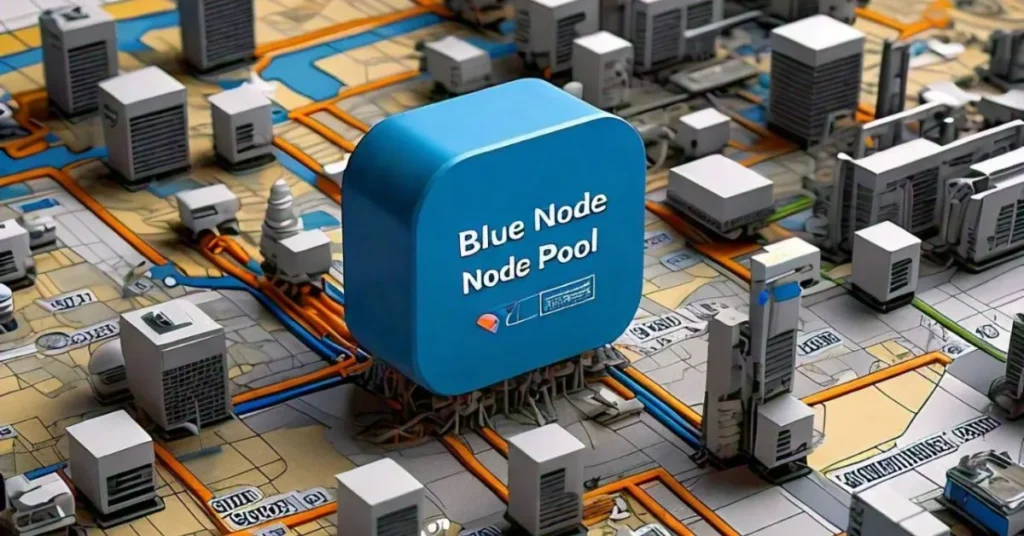In cloud infrastructure, keeping systems updated with minimal disruption is essential. In Google Cloud Platform (GCP), managing Google Kubernetes Engine (GKE) node pools using a blue-green deployment strategy can make this process seamless. This approach allows two node pools to run side by side—one running the active production environment (the blue pool) and the other set up to handle updates or upgrades (the green pool). It ensures that new updates are tested before fully transitioning to the new environment.
This article will walk through identifying, managing, and upgrading node pools using the blue-green deployment method in GCP. It will cover key steps, best practices, and how to make the most of this deployment model to ensure minimal downtime and smooth transitions during updates.
Understanding the Blue-Green Node Pool Strategy in GCP
The blue-green deployment strategy in GKE involves running two separate node pools in parallel—one representing the active production environment (blue pool) and the other (green pool) where updates or upgrades are tested. The blue pool remains operational, while the green pool is prepared with newer configurations or software updates. Once the green pool proves stable, workloads are shifted over, and the blue pool can be decommissioned.
Benefits of Blue-Green Deployment
- Zero downtime: This minimizes disruptions since the old (blue) pool continues running while the new (green) pool is being prepared.
- Rollback Capability: If issues arise with the green pool, it’s easy to roll back to the blue pool without impacting the user experience.
- Better Testing: You can test in a live environment (green pool) without sacrificing production data or services.
This strategy is beneficial for teams that need to maintain uptime while rolling out updates, as it provides a fallback option (the blue pool) in case issues are detected in the green pool.
How to Set Up and Identify Node Pools in GCP
Enabling the Blue-Green Deployment Strategy
Before creating or managing node pools, enabling the blue-green upgrade strategy on your cluster is essential. This enables GKE to efficiently handle node pool creation, management, and eventual replacement.
To enable the blue-green upgrade strategy for a node pool, run the following command:
| Copy code |
| cloud container node-pools update NODE_POOL_NAME \ –cluster=CLUSTER_NAME \ –enable-blue-green-upgrade |
This command activates the blue-green deployment feature, preparing your environment for seamless updates during node pool changes without manual intervention.
Creating a Green Node Pool for Deployment
Once the blue-green strategy is enabled, a new node pool (the green pool) needs to be created for testing updates or changes. Use the command below to create a green node pool with custom soak duration and batch rollout policies:
| Copy code |
| cloud container node-pools create NEW_NODE_POOL_NAME \ –cluster=CLUSTER_NAME \ –enable-blue-green-upgrade \ –standard-rollout-policy=batch-percent=0.25,batch-soak-duration=10s \ –node-pool-soak-duration=1800s |
- Batch percent determines the percentage of nodes to roll out at a time, while soak duration defines the waiting time between each batch.
- The soak duration is crucial because it ensures that the newly created green pool is stable before moving the entire workload.
The node pool is now the green pool, ready for testing and transition from the blue pool.
Identifying Node Pools and Their Status
Checking Node Pool Configuration
To verify if a node pool is configured correctly for the blue-green strategy, run the following:
| Copy code |
| cloud container node-pools describe NODE_POOL_NAME –cluster=CLUSTER_NAME |
Look for the upgradeSettings.strategy field in the output. If it is set to BLUE_GREEN, the node pool is configured for blue-green deployment. This command is useful when verifying which pools are part of the active blue-green upgrade cycle.
Listing All Node Pools in the Cluster
To get an overview of all node pools in your cluster and identify which one is the active blue node pool, run the following command:
| Copy code |
| cloud container node-pools list –cluster=CLUSTER_NAME |
This command lists all node pools, including their names, statuses, and versions. The active node pool currently serving the workload will be the blue node pool, while the secondary pool (green) will either be in the setup or testing phase. Once the green pool is stable, it will eventually replace the blue pool.
Managing the Blue-Green Upgrade Process
Upgrading the Node Pool
Once the green node pool is created, you can start the upgrade process by initiating the upgrade command. This will move workloads from the blue pool to the green pool:
| Copy code |
| cloud container clusters upgrade CLUSTER_NAME –node-pool=NEW_NODE_POOL_NAME |
During this process, GKE will automatically handle cordoning off the blue pool, shifting workloads to the green pool, and ensuring that the upgrade process proceeds without disrupting running applications.
Completing or Rolling Back the Upgrade
Once the upgrade is complete and the green node pool is stable, you can finalize the transition:
| Copy code |
| cloud container node-pools complete-upgrade NEW_NODE_POOL_NAME –cluster=CLUSTER_NAME |
However, you can roll back to the blue pool if any issues arise. This feature makes blue-green deployment highly reliable, allowing easy recovery in an unstable rollout.
Decommissioning the Blue Node Pool
Deleting the Blue Pool
After the new green pool has been tested, stabilized, and transitioned into the production environment, the old blue node pool can be decommissioned to free up resources. To delete the old blue node pool:
| Copy code |
| cloud container node-pools delete OLD_NODE_POOL_NAME –cluster=CLUSTER_NAME |
You complete the blue-green deployment cycle by deleting the blue pool, ensuring that the cluster is now fully updated with the new green pool as the active environment.
Best Practices for Blue-Green Node Pool Management
Here are some best practices to consider when managing node pools in a blue-green deployment environment:
- Monitor Performance Thoroughly: Always monitor the Performance of the green node pool before fully decommissioning the blue pool. This helps ensure the new environment is stable and functioning as expected.
- Use a Sufficient Soak Period: Setting a soak period of at least 30 minutes allows you to catch any potential issues with the green pool before finalizing the transition.
- Test Critical Workloads: Before transitioning fully to the green pool, ensure that all critical workloads, such as databases and essential services, have been thoroughly tested.
- Roll Back if Necessary: If anything goes wrong during the upgrade process, utilize the rollback feature to switch back to the blue pool immediately.
Conclusion
The blue-green deployment strategy in GKE is excellent for ensuring seamless updates without downtime. Identifying and managing the blue node pool is crucial in maintaining stability and ensuring a smooth transition to the new environment (green pool). By following these steps, Kubernetes administrators can confidently manage upgrades, minimizing risks while running workloads efficiently.
FAQs:
Why use a blue-green node pool strategy in GCP?
Using a blue-green strategy ensures minimal downtime during updates by allowing two node pools to run simultaneously, providing a smooth transition from old to new configurations.
How can I identify the active blue node pool in my GKE cluster?
Run gcloud container node-pools list –cluster=CLUSTER_NAME to list all node pools. The pool serving production is the active blue pool.
What happens if there are issues with the green pool?
If the green pool faces any problems during deployment, you can easily roll back to the blue pool, ensuring no impact on the production environment.
How long should the soak duration be in a blue-green deployment?
A typical soak duration is around 30 minutes. This gives you enough time to monitor the green pool for any issues before transitioning fully.
Can I use the blue-green strategy for all node pools in GKE?
Yes, the blue-green strategy can be applied to any node pool in GKE, making it a versatile option for both small and large-scale deployments.
Top of Form
Bottom of Form



